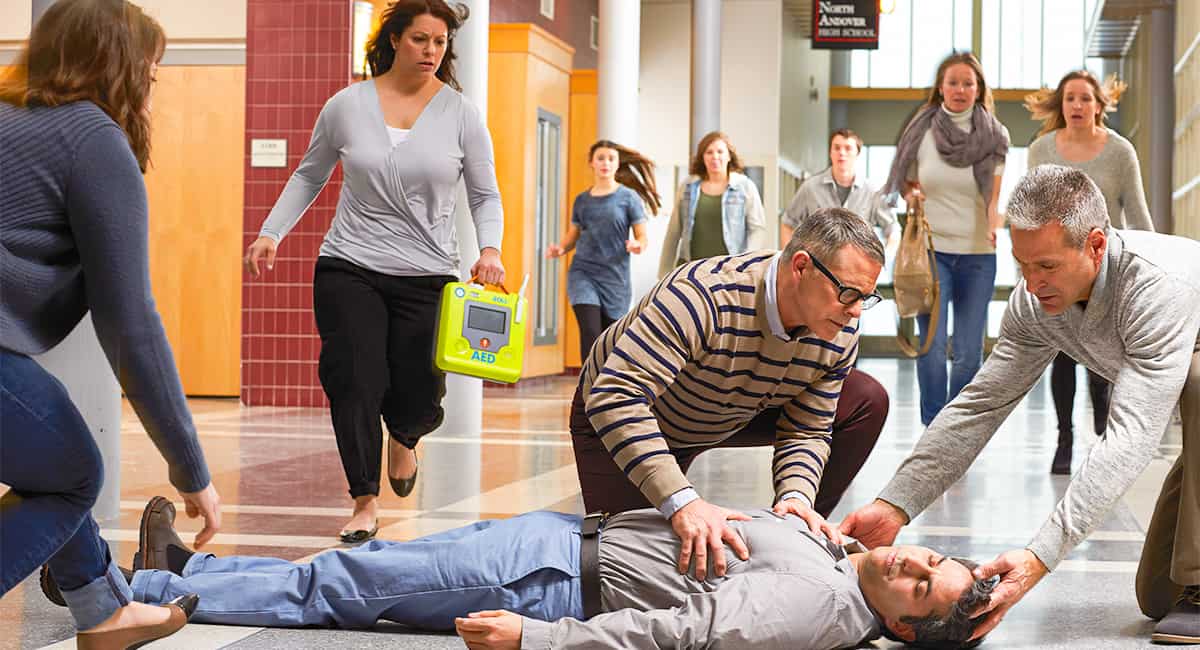
Basic Life Support (often shortened to BLS) is performed to aid a casualty’s respiration and circulation with CPR and defibrillation until more robust life support can be provided. It is the core of any attempt at resuscitation.
Why is Basic Life Support important?

Each year in the UK, over 30,000 cardiac arrests occur outside of a hospital. While emergency medical services attempt to resuscitate a casualty in most cases, the survival rate is very low – less than 1 in 10 people on average survive.
Casualties who receive basic life support intervention have drastically higher chances of survival after receiving advanced medical attention later. In many cases, early CPR and defibrillation doubles a casualty’s chances of surviving an out-of-hospital cardiac arrest.
When more people are trained in basic life support and CPR, the chances of survival for every cardiac arrest casualty increases. This is why both the 3-Day First Aid Training Course and the 1-Day First Aid Training Course include CPR/defibrillator training and practical sessions.
A guide to Basic Life Support
Chain of survival
The chain of survival is a series of actions meant to increase the chance that a casualty of cardiac arrest survives. Like any chain, the chain of survival can only be as strong as its weakest link. The links in the chain of survival are:
- Early recognition of cardiac arrest and call for help
- Early CPR compressions and rescue breaths
- Early defibrillation
- Early advanced medical attention
1. Ensure personal safety
It’s important that prior to offering any assistance, you check that it’s safe to do so. After all, you won’t be of much use to a casualty if you yourself become injured. If they’re readily available, wear gloves or other protective equipment.
2. Check the patient for response
Once you’re sure the surrounding area is safe, the next step is to check the patient for a response. Shake them gently by their shoulders and ask in a loud, clear tone: “Are you alright?” “Can you hear me?” or a similar question in your own words.
3. If there’s no response from the patient
If there is no response from a casualty, the first step you should always take is to shout for help and call 999 immediately. When you call for an ambulance on 999, you will be given basic life saving instructions over the phone, including CPR guidance.
For more information on CPR, see our blog on CPR & AEDs: The importance of training.
The importance of BLS training
Basic life support is one of the most effective life-saving tools gained from first aid training. Most general first aid courses include practical training on BLS, including the 3-Day First Aid at Work Course, the 1-Day Emergency First Aid at Work Course, and the ½-Day AED Defibrillator Training Course.
Read our other blogs for more information on first aid or contact us for further advice and information on our courses.
About the author:
Jo Stokes is a writer, marketer and trained first aider at Safety First Aid.
